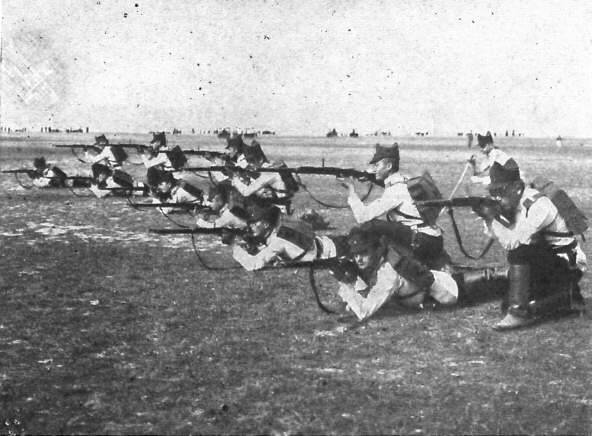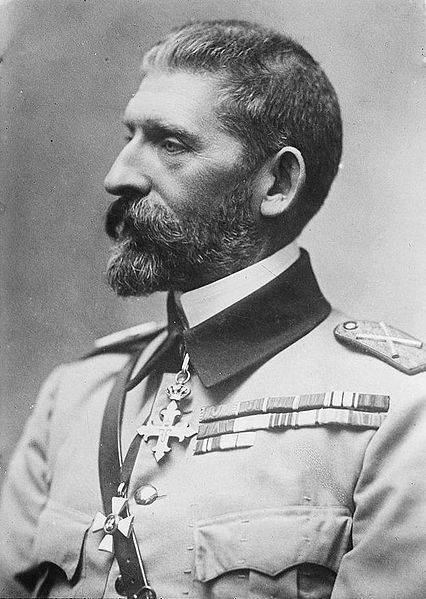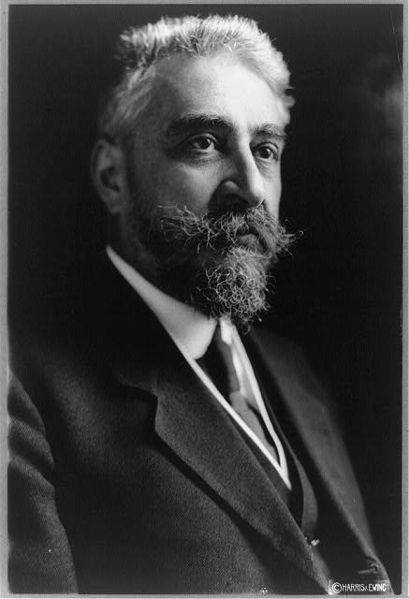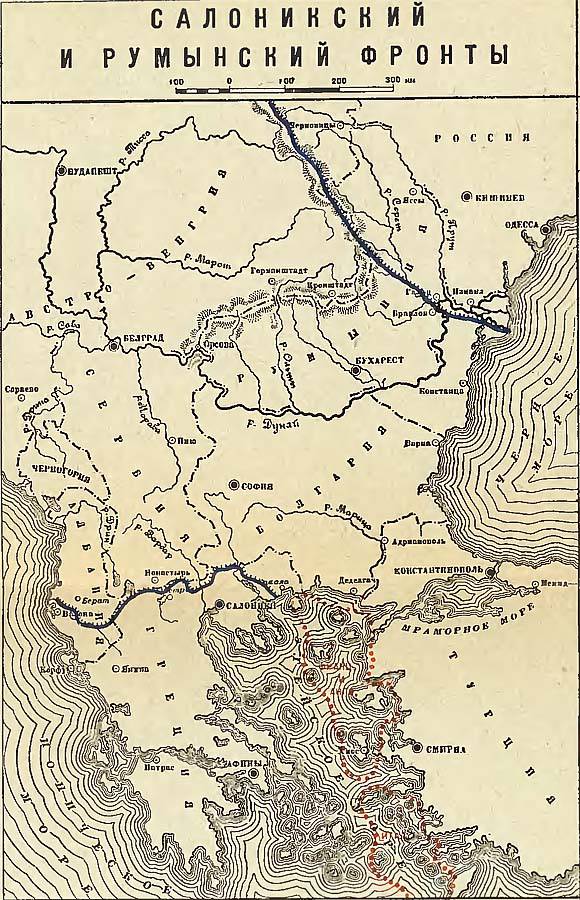Romanian disaster

100 years ago, in December 1916, most of Romania was occupied by the troops of the central powers. Towards the end of December, German-Austrian and Bulgarian troops occupied most of the territory of Romania. 24 December The 3-I Bulgarian army, advancing along the right bank of the Danube, approached the towns of Brailov and Machin. 25 December, after fierce fighting, the 9-I German army broke through the Russian-Romanian positions and began to move towards the city of Focsani, already in the east of the country near the border with Russia.
On New Year's Eve, the Russian High Command had to urgently deploy troops to the borders of the Seret River (Siret), which runs just east of the former Russian-Romanian border. Their main goal was to stop the further advance of the German-Austrian and Bulgarian troops, who continued the pursuit of the retreating Romanian army. These days, Bulgarian and German troops besieged cities in eastern Romania - Braila, Machin and Tulcea. Further advance of the enemy would have created a threat to the already Russian territories, Southern Bessarabia and even Odessa.
Thus, the hopes of the Romanian elite to profit at the expense of Austria-Hungary were buried. The Romanian army was defeated, Romania itself was almost completely occupied, and the Russian Empire had to urgently create a new southern front, the huge human and material costs for which further aggravated the internal situation in the country.
prehistory
Romania gained complete independence from Turkey in 1878, thanks to Russia's victories over the Ottomans. But of all the Balkan countries, Russian influence here was minimal. At the same time, the Romanian elite from the very beginning believed that Romania was deprived and claimed the territory of its neighbors, for which there was a significant percentage of the Romanian population, in particular, Austria-Hungary.
Before 1910, Romania had no chance to profit at the expense of its neighbors. However, at this time Bucharest received such an opportunity because of the sharp aggravation in the Balkans. In addition, the Romanian government needed to relieve internal tension in the country (the burden of socio-economic problems led to a political crisis). Thus, the peasant war 1907 of the year shook the whole of Romania and the authorities were forced to begin withdrawing land from large owners in order to transfer it to the poorest strata of the peasantry. A successful war seemed a convenient way out for sewage of social energy.
In 1912, the First Balkan War began. Bulgaria, Greece, Serbia and Montenegro together defeated Turkey, which lost its European possessions. However, the division of the skin of the "Turkish bear" ended in a fight already among the winners. Serbia and Bulgaria did not share Macedonia, besides Greece also had its interests there. The Bulgarians had the strongest army and thought to achieve a quick victory over the Serbs. Bulgaria in June 1913 of the year launched the Second Balkan War. However, the war with Serbia turned into a clash with a whole coalition. Serbia was supported by Montenegro. Greece came out against Bulgaria, then Turkey and Romania. Turkey decided to use the Second Balkan War to partially compensate for losses in the First.
Bucharest decided to use a favorable situation, when the Bulgarian army was tied by the war back in the First Balkan War, although before Romania and Bulgaria were considered allies. Bucharest began to put pressure on Sofia, demanding to change the border line in South Dobrudja in its favor. With the start of the Second Balkan War, Bucharest finally decided to oppose Sofia, since almost the entire Bulgarian army was tied up on the western border. 14 July 1913, the Romanian troops crossed the border in the Dobruja area and moved to Varna. The Romanians were waiting for fierce battles, but they were lucky, Sophia did not expect a “knife in the back”, almost all Bulgarian troops fought on the Serbian and Greek fronts. The Romanian cavalry, meeting no resistance, headed towards Sofia. 29 July, due to the hopelessness of the situation, the Bulgarian government signed a truce.
Romania got the opportunity to feel like a leading regional power. 10 August 1913, peace was signed in Bucharest. Serbs entrenched in Macedonia, the Turks returned part of the possessions in Europe - Edirne-Adrianople. A new Bulgarian-Romanian border was established in the Dobrudja region in favor of Romania. Bulgaria pledged to tear down military fortifications on the border with Romania. Thus, Romania received Southern Dobrogea with an area of 6960 km² and a population of 286 thousand people. However, Romania received the enemy in the face of Bulgaria. In addition, territorial disputes in the Balkan Peninsula were not resolved by this war. Almost all countries had complaints about their neighbors. This was one of the prerequisites of the First World War.
Romanian neutrality
At the beginning of World War I there were two parties in Romania: supporters of the Central Powers and the Entente. King Carol I (1881-1914), from the German Catholic house of Hohenzollern-Sigmaringen, gathered the crown council and proposed, on the basis of the existing union treaty, to enter the war on the side of Germany and Austria-Hungary. However, almost all the members of the crown council were in favor of declaring neutrality, so the king could only agree. The leader of the supporters of "armed neutrality" was the country's prime minister Ion Bratianu (Ionel Brattianu). He said at the council meeting: “In all likelihood, the war will be long. Let's wait as events unfold. We will have another chance to say our word. ” The news that Italy (a member of the Triple Alliance) will remain neutral only strengthened this position.
Thus, the Romanian elite showed patience and decided to wait for a better moment. October 10 King Karol passed away. The throne was occupied by his nephew Ferdinand (reigned in 1914-1927), who, unlike his uncle, held neutral positions. In Bucharest, they understood that an alliance with Berlin in the event of a victory would allow Bessarabia (Moldova) to be taken away from Russia, and an alliance with the Entente promises Austrian Bukovina and Hungarian Transylvania. Transylvania was a bigger prize, in terms of economic potential, territory and the Romanian-speaking population. On the other hand, in Bucharest, German power was feared.
It is also worth noting that the Romanian elite as a whole focused on France, spoke French. In Romania, they proudly called themselves the “Latin sister” of France, and Bucharest - “little Paris”. Another "Latin sister" was considered Italy. But the main economic partner was the German Empire, the second - Austria-Hungary. They consumed the goods of Romanian agriculture, supplied industrial equipment. The military cooperation with the Germans was also close, that is, the Romanians had a good idea of the strength of the German army.
Therefore, Bucharest waited quite a while. The course of hostilities did not give an answer, for whom in the end will be the victory. In 1914, the German plan immediately brought France out of the war failed, the Russians were defeated in East Prussia, but they defeated the Austro-Hungarian army in Galicia. Austria-Hungary suffered a terrible defeat, lost vast territories, including Bukovina, and survived only with the help of Germany.
During the 1915 campaign of the year, Russia suffered a defeat on the Eastern Front, lost the previously captured Austrian regions, and retreated from the Kingdom of Poland, but withstood. In the Balkans, Austro-German troops defeated Serbia and Montenegro, these countries fell, the remnants of their armies were evacuated. Bulgaria acted on the side of the Central Powers, which worsened the military-strategic position of Romania. On the other hand, Italy came out against the Central Powers, which distracted part of the forces of Austria-Hungary.
During the 1916 campaign of the year, Russia delivered a second crushing blow to Austria-Hungary. The Austrian front survived only because of the strategic mistakes of the supreme Russian command and the full support of Germany, which was forced to save an ally, transferring all relatively free units from other sectors of the Russian front and from the French front. In Bucharest, it was decided that the time for the march against Austria-Hungary had come. The Austro-Hungarian Empire was exhausted. Agriculture, from which mobilization took almost half of the labor force, could not provide the country. Recently, abundant Austria-Hungary led a half-starved existence. The population expressed discontent. The Hungarian Independence Party spoke from radical positions, demanding immediate peace. The ensuing assassination of the Austro-Hungarian Prime Minister and the death of the Austrian emperor Franz Joseph’s political longevity (he ruled from 1848) became the forerunners of the decline of the Hapsburg Empire.
In general, before the entry into the war, Romania lived well. Germany and Austria-Hungary needed Romanian grain, other agricultural products and gasoline. Bucharest greatly benefited from deliveries to the Central Powers, which lasted almost until entry into the war. From a geopolitical point of view, Russia and Austria-Hungary, the main potential competitors of Romania in the region, on whose lands Bucharest claimed, exterminated each other and their empires clearly went to ruin. Romania had to wait quite a bit longer and it could almost without a fight get Bessarabia (after the revolution and the collapse of the Russian Empire), and then Transylvania, since the Entente was clearly stronger than the Central Powers in its military and economic capabilities, Germany and Austria-Hungary were already on the verge of exhaustion, especially the Austro-Hungarian Empire. But Bucharest could not resist. Russia's victories over Austria-Hungary were impressive. The internal crisis in Russia could develop for a long time. The depletion of the military-economic, human resources of the Central Powers became more and more obvious. As a result, Romania embarked on a military adventure, which led the country and the army to a catastrophe and surprising political consequences.

Romanian King Ferdinand
Entente Policy
With the beginning of the war, the powers of the Entente and the Central Bloc tried to win over Romania to their side. The country had a convenient geographical position: from the east and south-west it bordered with the members of the Entente - Russia and Serbia, and from the south and north-west - with Bulgaria and Austria-Hungary, who fought on the German side. Thus, its territory could be used as a springboard for aggression against the Entente, or the Central Powers. Romania also had a large army (albeit poorly prepared), and in Rome and Paris they wanted to divert the Austro-German troops from the French and Italian fronts with the Romanian demonstration, to link the Austro-German troops in the Balkans. In addition, Romania was important as a resource base, in particular, as a supplier of agricultural products.
Russia, on the whole, doubted the usefulness of the Romanian kingdom, preferring to maintain its neutrality. True, Russia since the autumn of 1915 has put diplomatic pressure on Bucharest, due to the onset of the Austro-German and Bulgarian troops in Serbia. The Western powers of the Entente, in connection with the threat of losing the Balkans, also stepped up their policies. Petersburg offered Bucharest a military alliance, or at least permission for the transfer of Russian troops on Romanian soil, to assist the retreating Serbian army. However, Bucharest was bargaining time. As a result, the Russian Foreign Ministry cooled Romania, began to listen more to the military, who insisted on ensuring the neutrality of Romania.
A significant part of the Russian generals rightly doubted the combat capability of the Romanian army. The Russian military said: “If Romania comes out against us, Russia will need the 30 divisions to defeat it. If Romania comes out against Germany, then we will also need 30 divisions to save it from defeat. What is there to choose from? ”However, Russia's voice was not the main one. Soon the Russian General Headquarters resigned to the fact that France wanted to engage Romania in active hostilities.
Thus, in general, the performance of Romania was beneficial to France and Italy, diverting the forces of Germany and Austria-Hungary, creating an advantage for the armies of the Entente on the French and Italian fronts. In addition, the performance of Romania on the side of the Entente and its francophile sentiments of the Romanian elite strengthened the position of France, England and Italy in the post-war structure of the Balkan Peninsula, weakening Russia's political positions in the region. The benefit of Russia from the performance of Romania was dubious, apparently, the Russian Empire in its position at that time was more beneficial to the neutrality of Romania.
Romania decides to go to war
In the summer of 1916, the Entente powers again pressed Romania. With the major success of the Russian army on the South-Western Front, the immediate action of the Romanian army against Austria-Hungary promised a decisive defeat of the Hapsburg empire and a major strategic victory for the Entente over the Central powers. In addition, the battle of the Somme began, England and France needed to divert Germany to the East.
As a result, Bucharest, in a special note to the allies from 4 in July, 1916, agreed in principle to take the side of the Entente. But he set a number of conditions: 1) mobilization in Romania will only begin when the first train arrives in the country weapon and ammunition for the Romanian army from the allies. France and Russia must pledge to supply all necessary military supplies to Romania throughout the war; 2) Entente powers should give guarantees that the general attack on the Central Powers will not be stopped; 3) the Russian army will keep its positions in Galicia and Bukovina; 4) Romania will cover from a possible strike Bulgaria. At the same time, Bucharest also had extensive territorial claims.
It is clear that such an extensive list of the conditions of Romania demanded a certain time for coordination and buried the hopes of the Russian command for the immediate strike of the Romanian army on Austria-Hungary. As a result, the most advantageous moment for the performance of Romania against the Austro-Hungarian Empire was missed.
20 July Romania, with which representatives of the Entente were negotiating to enter the war, banned the export of grain to the Austro-Hungarian Empire and Germany under the pretext of threatening famine in the country. Also, in all resorts in Romania, they stopped taking vacationers to prepare places for the wounded. On July 23, in the French city of Chantilly, the Romanian military attache, Colonel Rudeanu, concluded an agreement on behalf of his government with delegates of the Allied main headquarters of the Entente. Bucharest pledged to put 150 thousand army to attack Bulgaria, which was supposed to begin simultaneously with the Allied offensive on the Front of Thessaloniki.
Interestingly, almost all the demands of Romania, voiced by Prime Minister Ion Bratianu, have found the support of the French government. The French ambassador in Petrograd, Maurice Palaeolog, did not hesitate to express his words and warned the Russian government about a possible “deep disappointment of France” if Romania’s negotiations with the Russians did not lead the country to enter the war on the side of the Entente. Palaeologus stressed that, since France shares all the fair wishes of Romania, the entire responsibility for the possible failure of the negotiations will be placed on Russia. The Russian ambassador to Paris, Alexander Izvolsky, actively supported this position.
At the same time, the alliance with Romania almost collapsed at the very last moment. On July 26, the governments of the Entente countries received news that Romanian Prime Minister Bratiano decided to abandon his earlier commitment to enter the war on their side as soon as possible. For this, Bratiano began secret negotiations with the Bulgarian king, Ferdinand. Bucharest did not want to fight with Bulgaria, and planned to concentrate all forces on Transylvania. Earlier, the Romanian government promised to open military actions against the Central Powers in exchange for entering the Russian corps into Dobrudja. Russia promised to fulfill these conditions, but instead of an offensive, Romania began secret negotiations with Bulgaria, which fought on the German side. The Romanian government did not hide the fact that it did not want to fight with Bulgaria, but was ready to attack Austria-Hungary in order to get Transylvania. This position discouraged the Allies, as they were preparing an offensive against Bulgaria from Greece.
However, at first England, and then France agreed with Romania. On August 1, French Prime Minister Aristide Briand made concessions to Britain and Romania, rejecting the demand for an immediate Romanian attack on Bulgaria. He telegraphed to the French ambassador in St. Petersburg, Maurice Palaeologu, the following: “I agree with Sir Edouard Gray and General Joffre that we could not ultimately demand the immediate declaration of war by Bulgaria on the part of Romania, because it is very likely that the Germans will force the Bulgarians to immediately attack Romanians, and then the Russian units [in Dobrudja] always have time to start military actions. ” 5 August, Chief of the Russian General Staff, General Mikhail Alekseev, agreed with this opinion. On the same day, French President Raymond Poincaré sent a telegram to St. Petersburg, in which he called on Emperor Nicholas II to agree to conclude an agreement with Romania on the latter’s entry into the war against Austria, without the requirement to speak out against Bulgaria. Under concerted pressure from various sides, the Russian tsar capitulated.
Thus, the original plan, according to which Romania was to attack Bulgaria and Austria-Hungary, received 50 thousand Russian corps in aid, and the support of the Allied army of the Allies, collapsed. Bucharest did not want to fight Bulgaria for fear of losing Dobrudzu, but was ready to strike Austria-Hungary in order to capture Transylvania. Bucharest buried a simultaneous strike plan on Bulgaria from Romania and Thessaloniki. Russia under the pressure of England and France resigned to this. On August 9, Tsar Nicholas agreed to the proposal of France to refuse to demand Romania to declare war on Bulgaria, for the sake of Romania’s immediate launch against Austria-Hungary.
17 August 1916 in Bucharest, a secret convention was signed between Romania on the one hand, Russia, England, France and Italy, on the other. The agreement provided for Romania’s entry into the war, for which, if victorious, it promised to join Transylvania, Bucovina (not only southern, where Romanians prevailed, but also northern, where there was more West Russian population) and lands of the Hungarian plain as far as Tisza, although on the shores of this there was no river of Romanian population. At the same time, Romania did not commit to fight with Bulgaria.
Romania itself did not have a military industry (at that time there were three factories that produced light weapons), so the Allies pledged to supply the Romanians with weapons, ammunition and equipment. French and British weapons for the Romanian army were taken across the North Atlantic to Murmansk, then by rail through the whole of European Russia. Also, the Allies promised to cover Romania from Bulgaria. For this, a Russian auxiliary corps was sent to the Romanian Dobrudja. And the Western allies promised to launch a decisive offensive by the Anglo-French army of Salonica no later than 8 days after Romania began active hostilities.

Head of the Romanian Government Ion Bratianu
Romanian army. Plans
The Romanian army was large: 600-650 thousand people. But the Romanian army had poor combat training, few modern weapons, there were extremely poor communications in the country, which sharply worsened the maneuver by forces. There was almost no railway network. There was almost no military industry either. The army had only 1300 guns, half of which were outdated and about 800 machine guns, which they did not know how to use and carried in a train. The army did not have heavy artillery. There was almost no training, they took care of the ammunition, there were not enough guns, uniforms, shoes, there was no entrenching tools. The quality of the Romanian officers and generals left much to be desired, the Romanian military caste preferred to spend time in the taverns and the society of “cheerful girls” rather than in dust and dirt, teaching the soldiers. The Romanian command had no serious combat experience and was not prepared to conduct a modern war. The supply was very bad, and what went into the army was simply being plundered.
The borders of Romania were unprofitable in a military-strategic sense. In the south, along the Danube and further along a straight line from Turtukaya to the Black Sea, there was a border with Bulgaria; in the west and north-west, Romania bordered Austria-Hungary across the Carpathians. And in the direction of Focsani, the Austrian possessions strongly went eastward, as if forming a bag between Wallachia and Moldova. Such a frontier line, apart from its length, was also inconvenient because the enemy could cut off all Wallachia with a protrusion to the side of Orsovo with a blow to Focsani or from Dobruja. Thus, the extended Romanian borders in the southern and western directions were vulnerable and were not provided with either strong military cover or powerful fortresses that would have delayed the onslaught of the enemy.
According to the mobilization schedule, Romania was to deploy 400 thousand army, consisting of 20 strong divisions, 10 priority and 10 secondary. In fact, at the beginning of the war, around 25 divisions (23 infantry and 2 cavalry) were under arms, around 250 thousand in total. The remaining troops were to provide the rear, were in the stage of mobilization and training. Only the first divisions were equipped with rapid-fire artillery and a number of field heavy howitzers; Secondary divisions were armed with weapons of the old type.
The performance of Romania took place with complete disagreement over the direction of the main attack of the Romanian army. England and France met the wishes of Bucharest and shifted the center of gravity of the actions of the Romanian army to Transylvania, placing the cover of Romania from Bulgaria on the Russian army, which was supposed to advance to the Danube. The Russian command stood for the joint actions of the main Romanian forces, the allied army of Thessaloniki and the Russian auxiliary corps, first to put Bulgaria out of action. After that, the enemy in Transylvania, threatened from the north by the Russians, and from the south by the combined forces of the Salonica and the Romanian armies, had to leave this area itself. For this it was necessary to strengthen the Allied army of Salonica so that it could launch a decisive offensive, threatening the rear of the Bulgarian army, which would be tied by the performance of the Romanian army. But the Western powers did not agree to such an increase.
Thus, the French and Romanian points of view won, and 27 August Romania declared war on Austria, having received the complete freedom of a separate command and to help the Russian corps, which in Dobrudja was to join the Romanian army. So the long-time dream of Romania came true - in alliance with the “Latin sisters” France and Italy, she joined the battle to free her compatriots from the rule of Hungary. At the same time, the choice of the direction of the main attack was dictated by the national idea, and not by military-strategic calculations. Instead of striking at the relatively weak and threatened troops of the Entente from Bulgaria’s Thessaloniki region, which did not have the opportunity to actively fight in two strategic directions, Romania left only a relatively small barrier on the Bulgarian border, leaving the main forces to seize Transylvania. For the Russian army, this was not the best moment. By this time, Brusilovsky's breakthrough had already exhausted its strategic potential and the most favorable moment for the Romanians to enter the war had already been lost. After the bloody summer battles, the Russian troops were drained of blood and tired, in need of replenishment and replenishment of ammunition. In general, this predetermined the crushing defeat of the Romanian army.

To be continued ...
Information